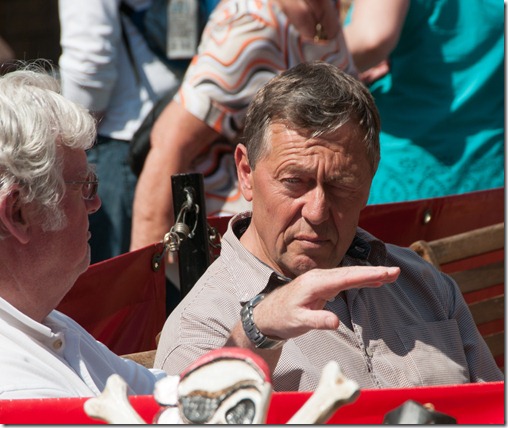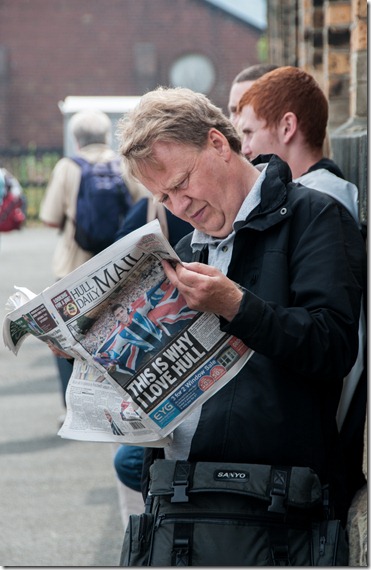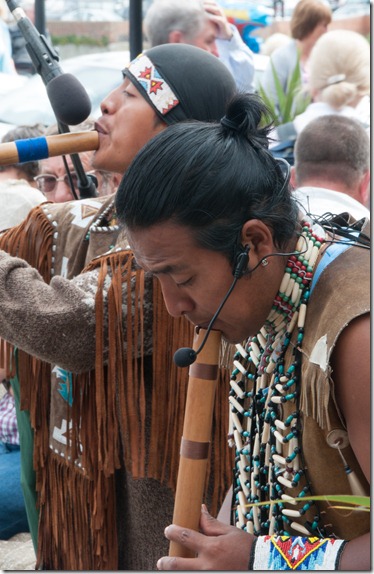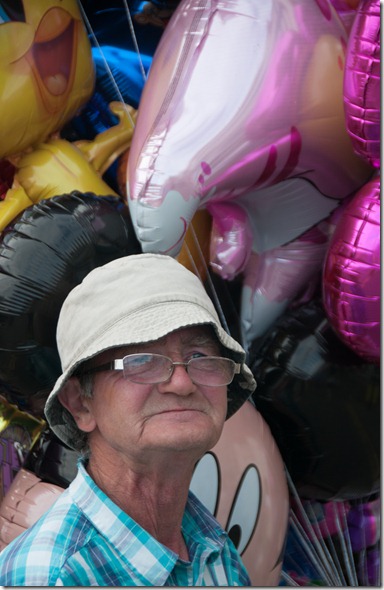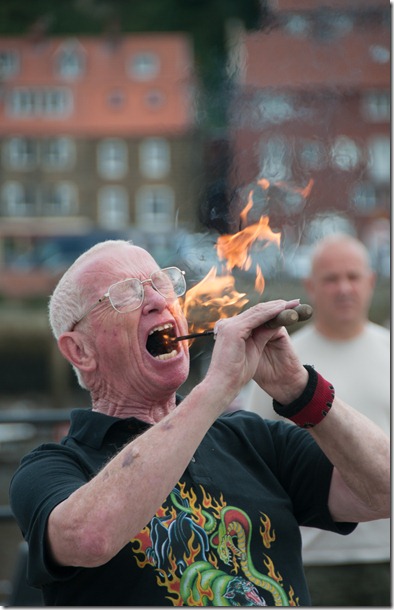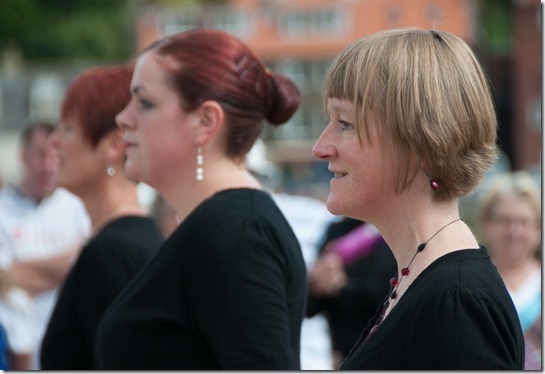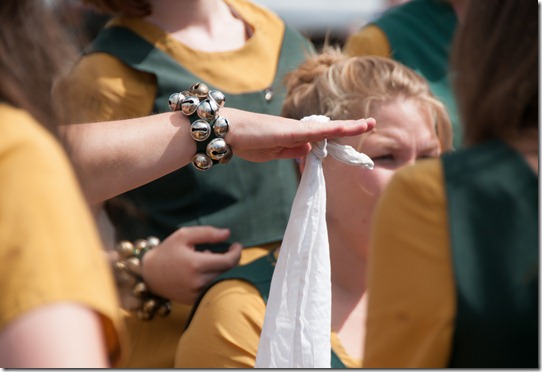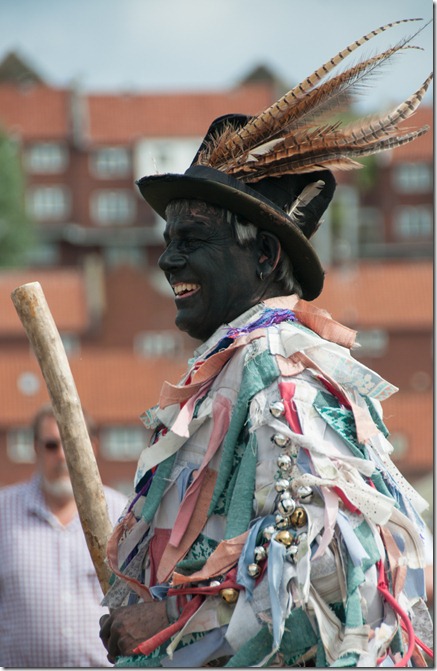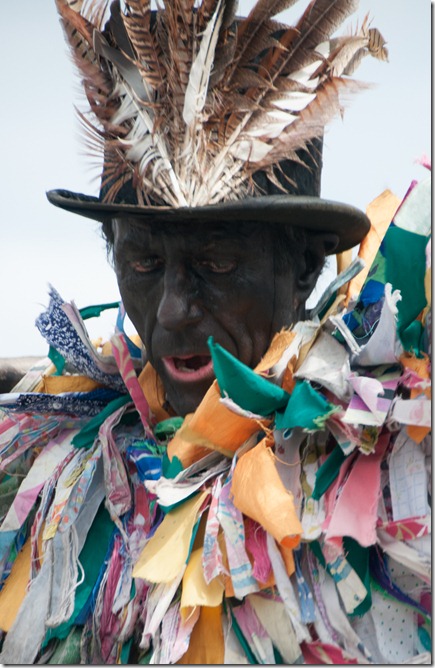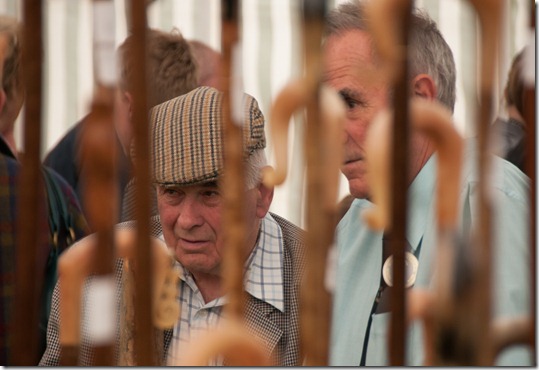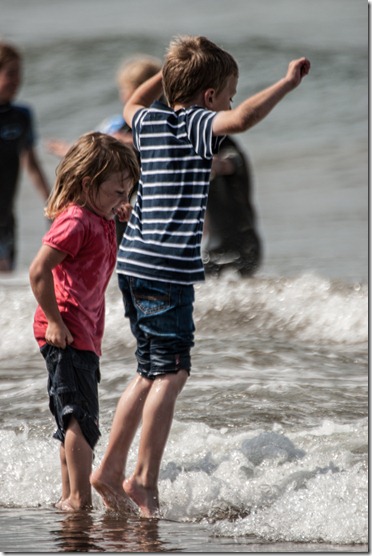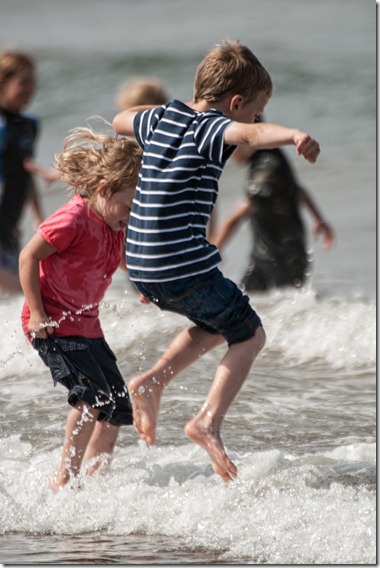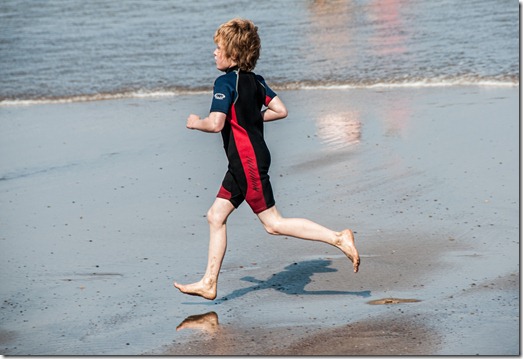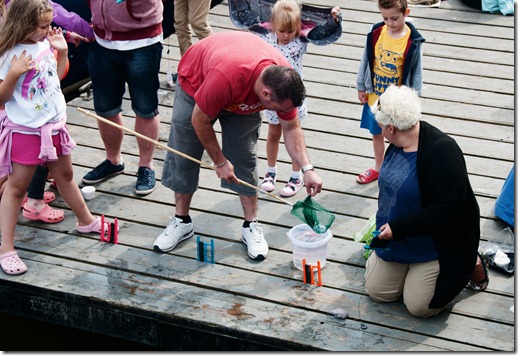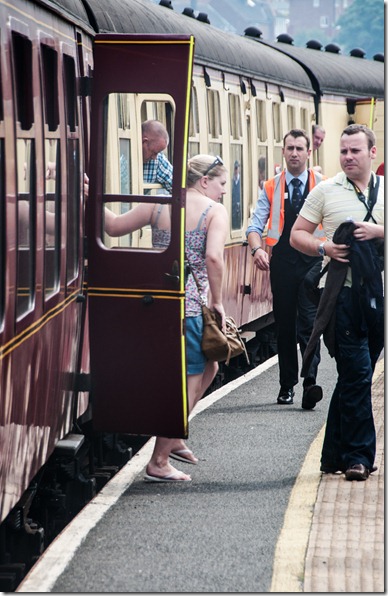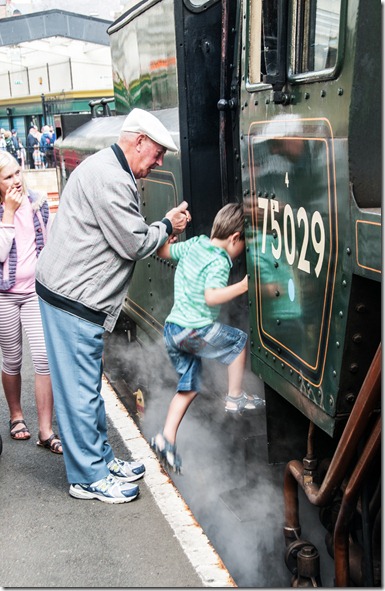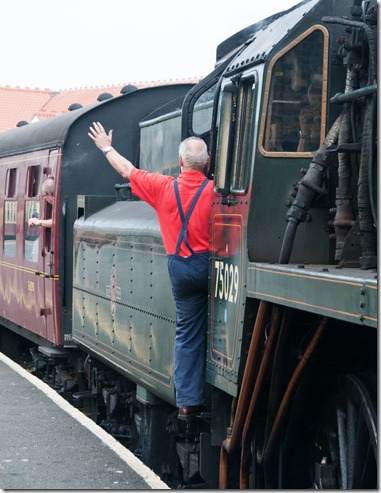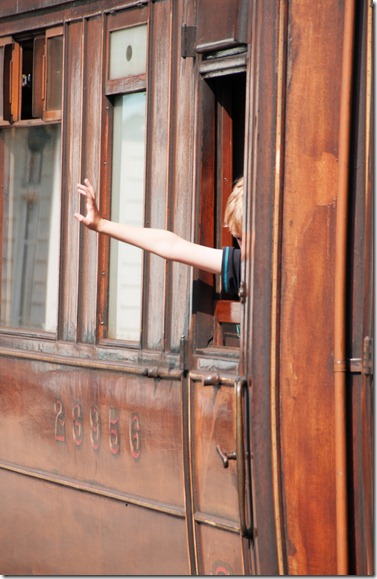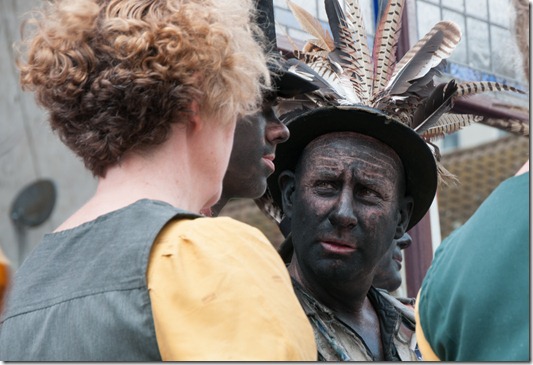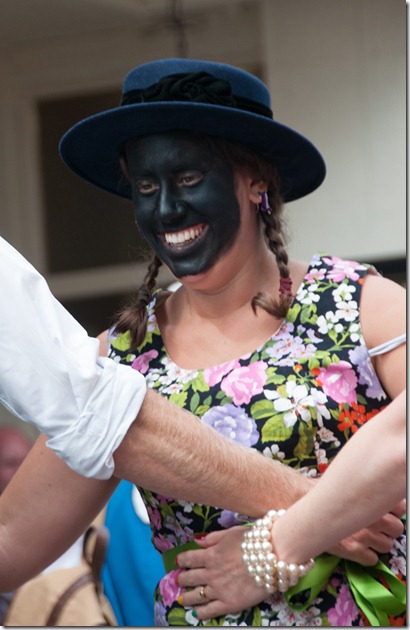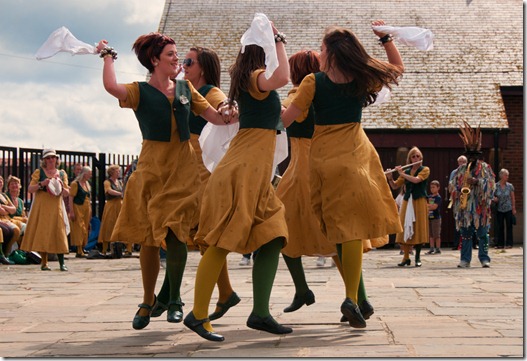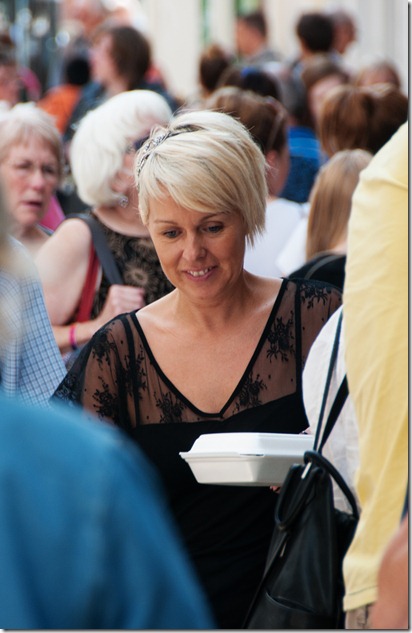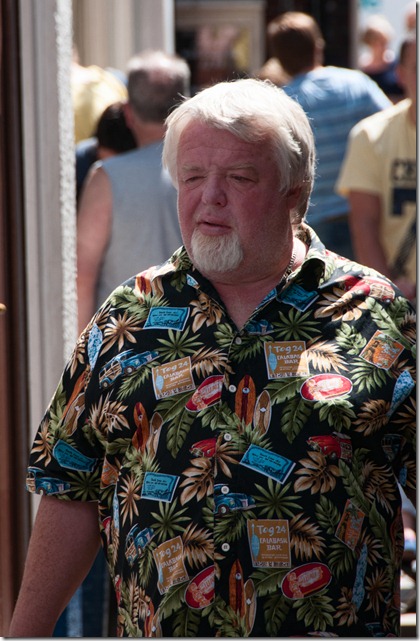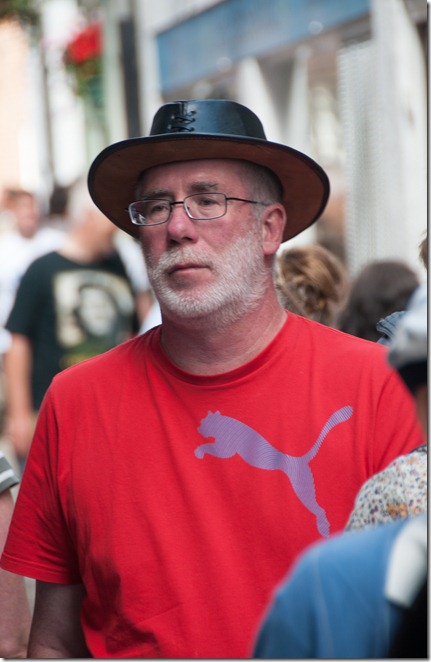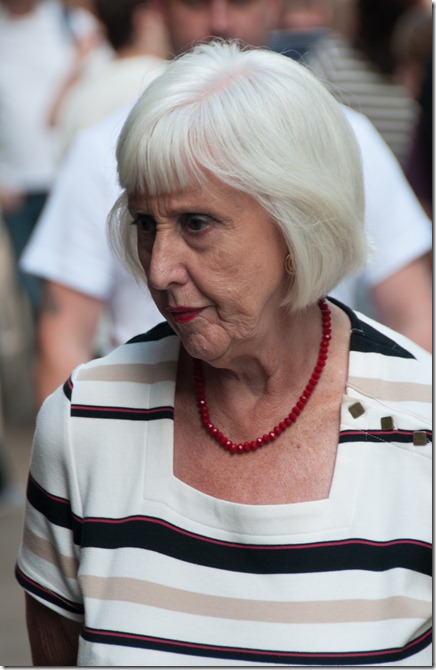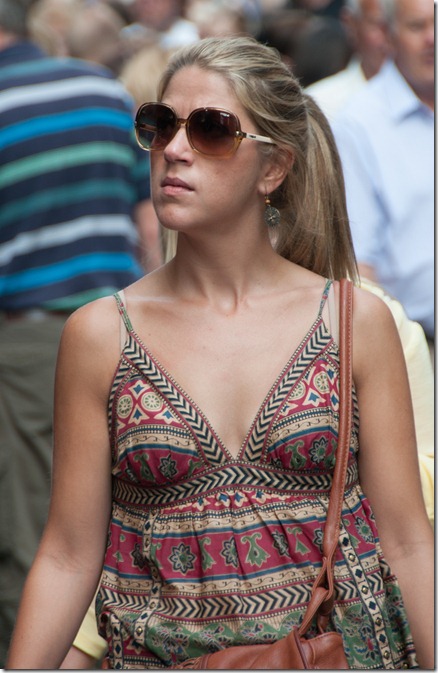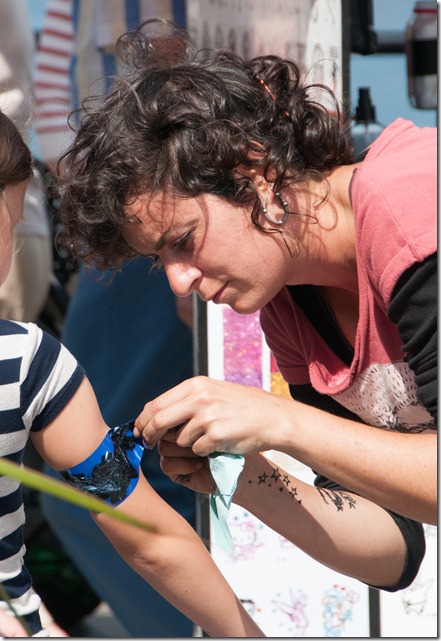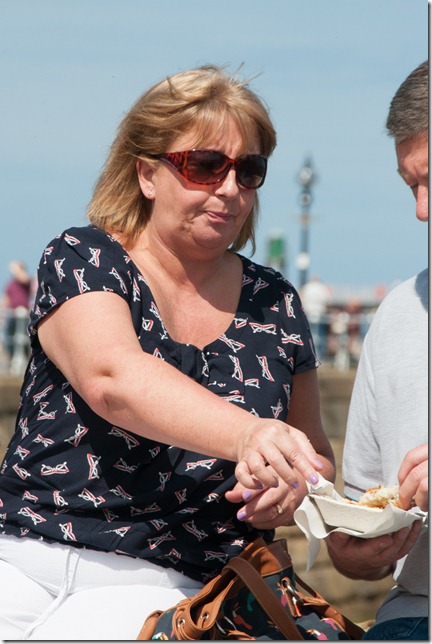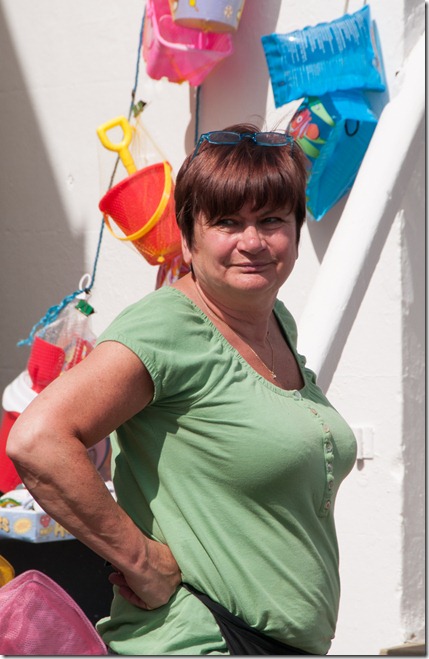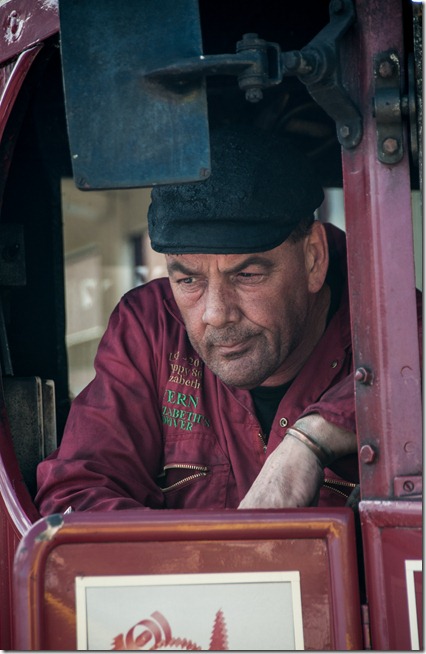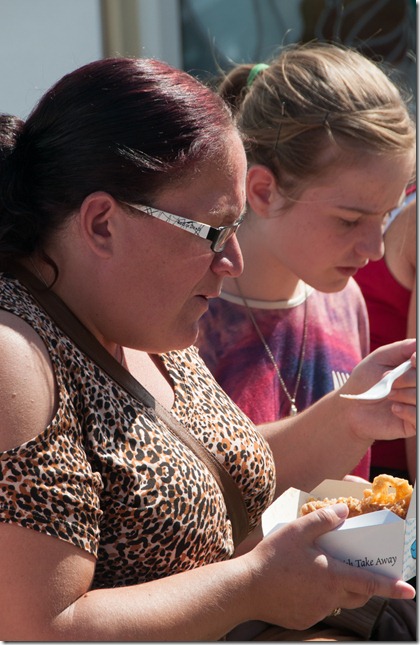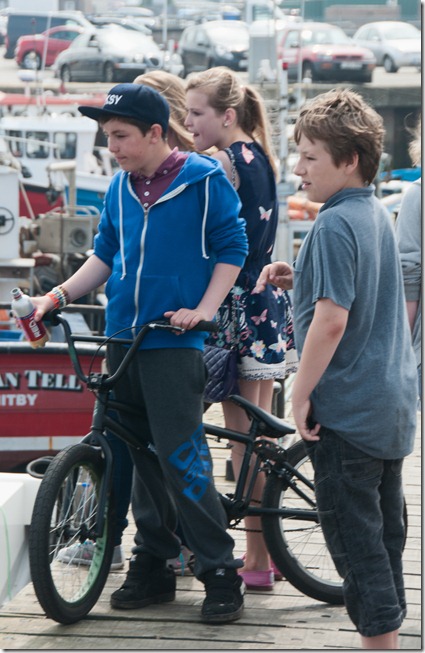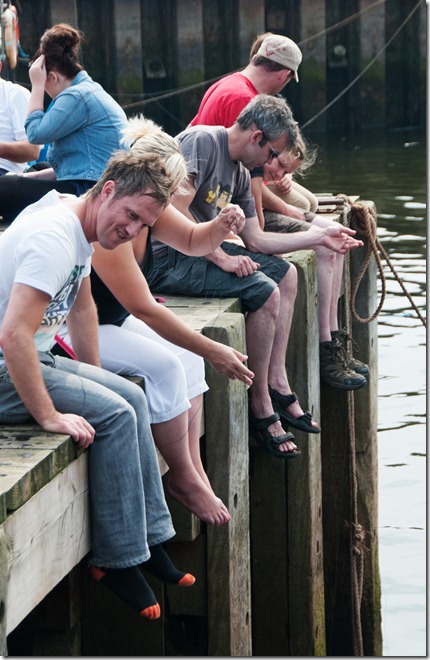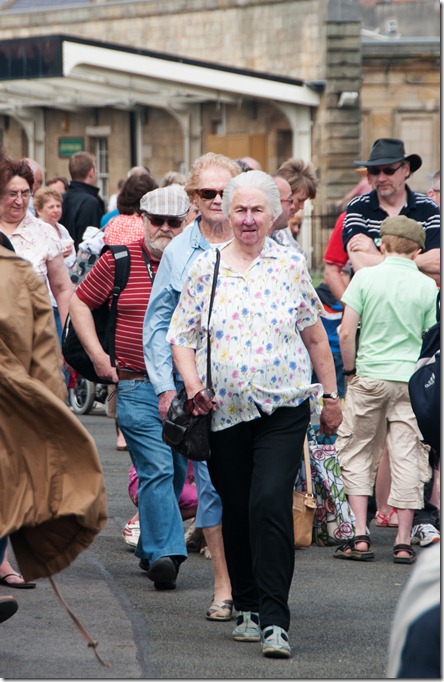For this exercise I’ll be using the Nikkor 18 – 200 mm, 1:3.5 – 5.6 VR lens on the Nikon D300s. The Vibration Reduction facility allows its use without a tripod for shutter speeds down to around 1/20 sec, so it’s ideal for this application.
There’s an open air café in the market place, with the tables tucked behind the market stalls. I captured this image of a debate from about 15 metres, but no one else was aware, so I was quite comfortable with it.
ISO 200, 200 mm (300 mm equivalent 35 mm), f/11, 1/500 sec.
It’s unfortunate that the stall holder had carved skull and crossbones among his wares which I had difficulty framing around, but the gesticulation of the man on the left and the expression on the other man’s face were easy to capture without any intrusion from me, so this type of photography definitely has its advantages.
ISO 200, 150 mm (225 mm equivalent 35 mm), f/8, 1/200 sec.
Here’s an example of using selective focus, keeping the subject in focus while his surroundings become blurred. The use of the long telephoto at a relatively wide aperture gives this effect.
ISO 200, 105 mm (157 mm equivalent 35 mm), f/22, 1/20 sec.
This image of street musicians was taken at a much smaller aperture in an attempt to bring more of the surroundings into focus (particularly the second musician). Obviously the characteristics of the longer lens don’t allow a greater depth of field.
It’s interesting to note how the distance is compressed using telephoto lenses. It makes the scene look very crowded whereas the reality left reasonable space between the players and the crowd.
ISO 200, 112 mm (168 mm equivalent 35 mm), f/5.6, 1/400 sec.
This image of a balloon seller during the Whitby Regatta works because he hasn’t noticed the photographer – the main advantage of using a telephoto lens. The balloons are out of focus not only because of the depth of field, but also due to movement in the breeze.
ISO 200, 70 mm (105 mm equivalent 35 mm), f/5.6, 1/1600 sec.
Taken while waiting for the arrival of the Red Arrows for the Regatta display, this man was obviously posing as Captain Cook (though I don’t suppose Cook would have approved of the tee shirt). I couldn’t resist the juxtaposition in this image and adjusted the lens to frame him against the statue. The difference in focus of the two elements adds to the juxtaposition. It was just a grab shot, so I was quite pleased with it – almost better than seeing the Red Arrows!
ISO 200, 200 mm (300 mm equivalent 35 mm), f/5.6, 1/500 sec.
Avoid the local curry house!
Getting close up images from a safe distance is what telephoto lenses are all about. The Regatta weekend also signals the start of Folk festival, so the Pyrotechnic Pensioner was another attraction for the followers of both events.
The subject is in good focus compared to his surroundings, so the telephoto again works well for this separation.
ISO 200, 200 mm (300 mm equivalent 35 mm), f/5.6, 1/800 sec.
I wanted to keep the foremost clog dancer in focus while allowing her two companions to become more blurred with their distance, so I kept the aperture at its widest for this zoom setting. ‘Strictly Clog’ were clog dancing in its traditional form, so their upper torsos were virtually stationary while their feet moved at speed. I’m pleased with the composition of this image.
ISO 200, 200 mm (300 mm equivalent 35 mm), f/5.6, 1/1250 sec.
Before each dance set, the Martha Rhodens Tuppenny Dish Morris dancers have a ‘toolbox talk’ where safety issues and the planned dances are discussed. This image was taken during one of these talks and shows an example of how the cloth is to be held for the next dance.
This image wouldn’t have been possible with a standard or wide angle lens without being within the group itself. Using the telephoto lens has enabled this personal detailed image of a major part of the Folk Festival.
ISO 200, 200 mm (300 mm equivalent 35 mm), f/5.6, 1/800 sec.
The Shropshire Bedlam Morris dancers are fast moving, garish and loud. There is so much going on at their performances that only very fast shutter speeds can be used to capture any detail. Panning is required and continuous focusing used to keep a sharp image of the subject. To get a close up image like this a fairly long telephoto is the only way ahead. Look how much enjoyment there is in the performance of the dance. This is what the Folk Festival is all about for me.
ISO 200, 200 mm (300 mm equivalent 35 mm), f/5.6, 1/500 sec.
This uses a slightly slower shutter speed to show the loss of sharpness as the dancer whirls past. The emotions evident during the dance show in the expressions of the dancers’ faces - Sometimes aggressive, sometimes embracing, but always just right for the dance.
ISO 400, 200 mm (300 mm equivalent 35 mm), f/5.6, 1/400 sec.
During the same week the local agricultural shows are taking place. This image was taken at the Egton Show, in the ‘produce and handicraft’ tent. The ISO was increased, to allow higher shutter speeds. Using the shallow depth of field of the lens and a wide aperture I used selective focusing to keep this gentleman in focus while the crooks and sticks in the foreground were blurred to give him a sense of place.
This exercise has been really enjoyable for me and I’ve gained yet more confidence in photographing people – I sometimes think that I really don’t exist in other people’s worlds.
Using a telephoto lens has pros and cons.
Positive points are:
· A reasonable distance can be kept from the subject, so that they aren’t crowded and in many cases they don’t realise their image is being captured.
· Interaction between the photographer and the subject isn’t always necessary, so the photographer can concentrate on the job in hand.
· Detailed images can be captured without being too close to the subject.
· Selective focus can work well on portraits, giving a sense of place while keeping only the subject in focus.
· The long lens does not cause any distortion of features.
· Distances can be compressed to good effect.
Negative points are:
· The greater distance between photographer and subject means that other people may walk between them.
· The longer lens is more affected by camera shake – not so much of an issue when image stabilization or vibration reduction lenses are used, but otherwise a tripod is necessary (not always a practical option), or the ISO must be increased.
· The shallow depth of field may be an issue if the surroundings are required to be kept in sharp focus.
I find the longer lens settings easier to work with when photographing people, but sometimes it borders on voyeurism when watching people who don’t realise they’re being watched. It’s getting easier but it still sometimes feels wrong to me. At least I don’t need to get into their personal space!
